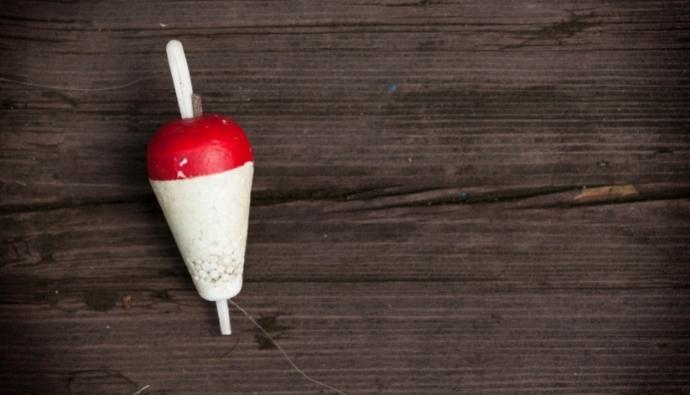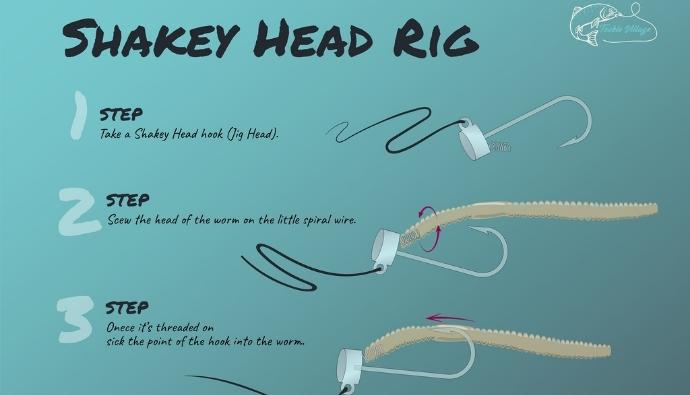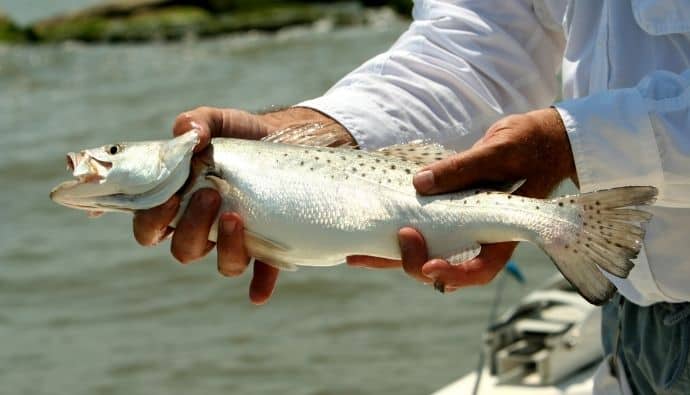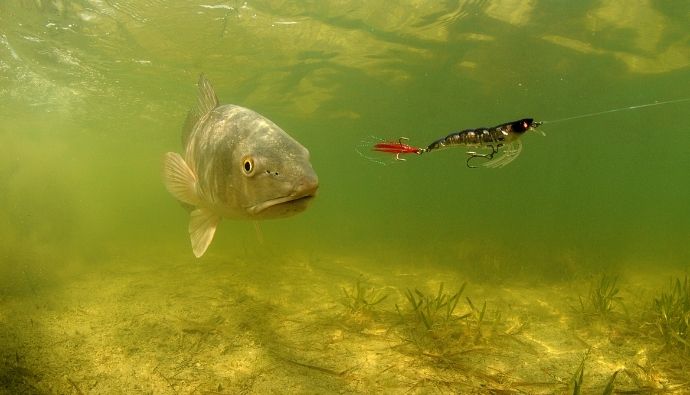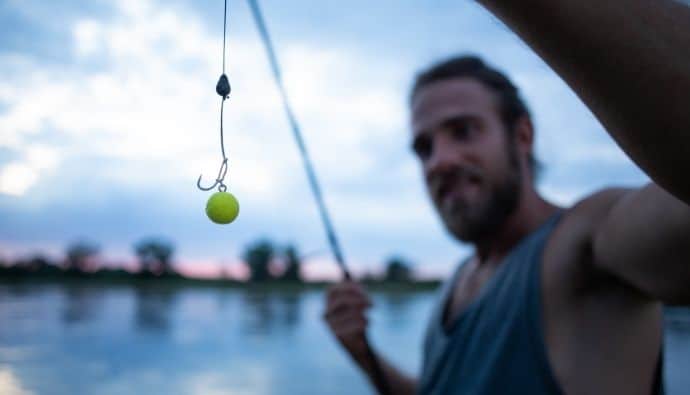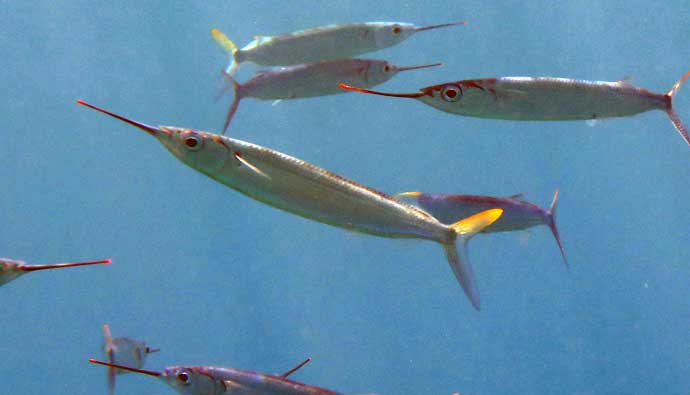
If you want to catch big surf fish such as tuna and swordfish, you need live bait, which doesn’t get any better than ballyhoo fish. This fish is often used as a cut bait and for trolling by saltwater anglers. It sports a halfbeak for a snout and has three stripes that extend all over its greenish back.
The belly and the sides of the fish are silver, and the caudal fin is a vibrant orange or yellow. The vibrant coloration and highly reflective skin are just some reasons why the ballyhoo is considered a prime baitfish.
Ballyhoo rigging can be a challenge if you don’t know what you are doing. Ballyhoo rigging can be done in several ways depending on the fish you want to catch and the conditions you are fishing in.
How to Rig a Ballyhoo
Method 1 – The Spring Method
- Poke out the eyes of the ballyhoo from each eye socket using anything that is about the same size as the diameter of the eyes, such as a deboning tool. This step will prevent the fish from spinning in the water due to water pressure.
- Cut off the fins using heavy-duty scissors to remove drag.
- Squeeze out the poop from the ballyhoo by running and pressing your fingers down the fish.
- Break off the bill just before its mouth.
- Make the fish more flexible by moving it in an S formation between your hands and by pressing along the spine.
- Lay the rig up next to the fish with the pin next to its mouth to see where the hook will come out of its belly. Mark the spot by poking a hole in it with the hook point.
- Run the hook through the gill plates. Bend the hook as you go so you don’t tear open the belly. Find the hole you made as a reference point and bring the hook out of it.
- The chin weight on the ballyhoo rig should tuck up right under its gills when the hook is in and through the fish.
- Shove the pin-up through the bottom and right on top of the lip.
- Slide the spring down the mono leader and let it go over the fish’s face. Hook it over the pin coming out of the mouth and start twisting till everything is twisted down tight.
- Slide the lure down the mono, and it will lock in right on top of the spring to complete the ballyhoo rigging.
Method 2 – The Pin Rig Method

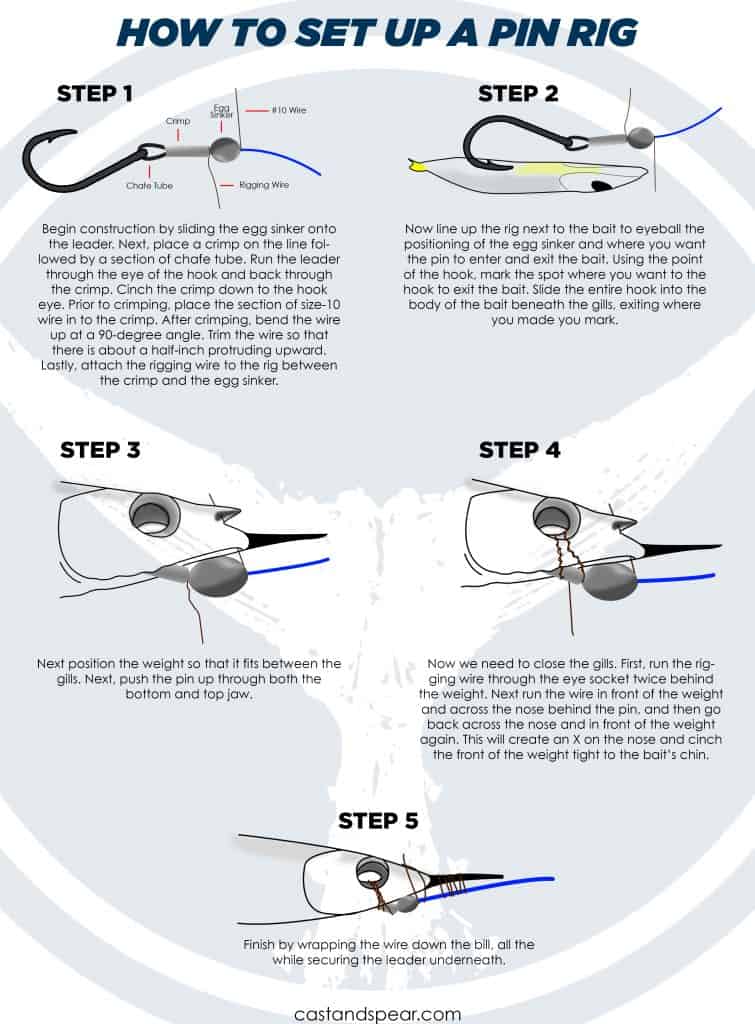
- Poke out the eyes from the eye socket of the ballyhoo, as mentioned in the first method.
- Line the rig next to the bait to determine the egg sinker’s position and where the pin should enter and exit the fish.
- Slide the hook into the body of the ballyhoo right under the gills and exit where you made the point.
- Position the weight so it fits between the gills, and push the pin up through the bottom and the top jaw.
- Place the rigging wire through the eye socket twice right behind the weight. Then pass the wire in front of the weight and over the nose behind the pin before going back across the bose and in front of the weight again. This will close the gills and cinch the weight tightly to the chin of the baitfish.
- Complete the ballyhoo rig by wrapping the wire around the bill and secure the leader underneath.
Method 3 – The Pinless Ballyhoo Rigs Method
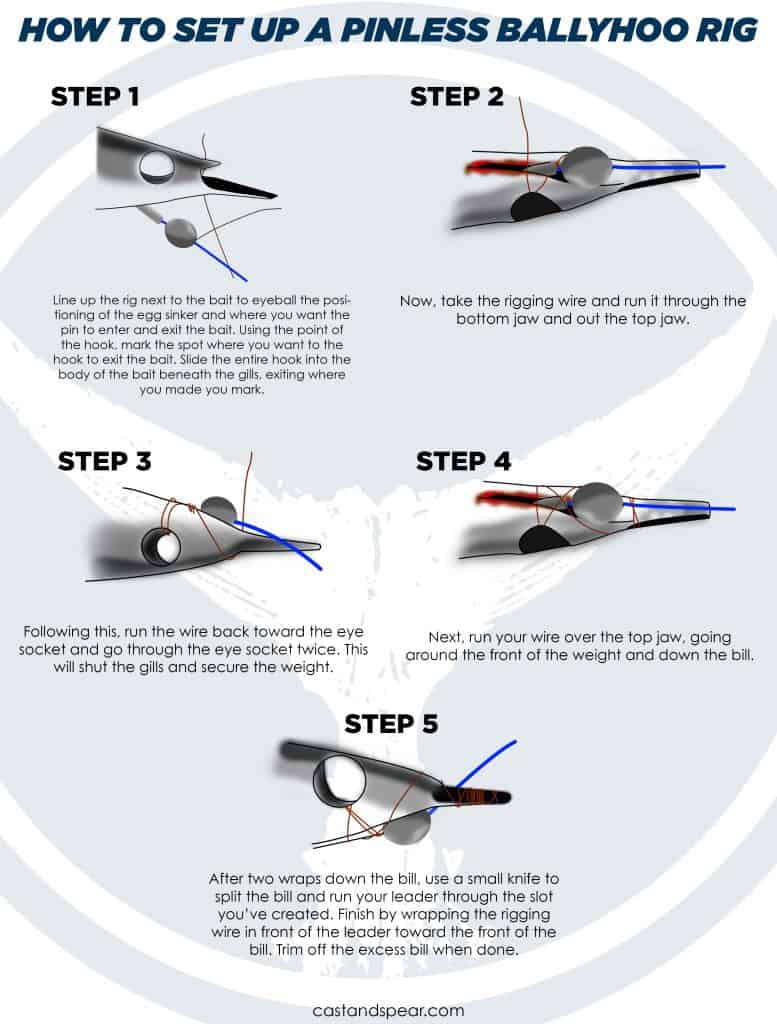
- Use the same hooking method, as mentioned in the previous rigging methods to install the hook in the bait.
- Rig the wire and run it through the bottom jaw and out of the top jaw of the fish.
- Run the copper wire back toward the eye socket twice to shut the gills and secure the weight.
- Run the rigging wire over the top jaw and go around the front of the weight right down to the bill.
- Make two wraps around the bill and use a small knife to split it open.
- Run the fluorocarbon leader through the slot you created and finish by wrapping the rigging wire in front of the leader.
- Cut off the excess bill to complete the ballyhoo rigging method.
Method 4 – Circle Hook Technique
- It’s time to attach the rigging wire to one eye of the swivel using barrel wraps and slide the other eye on the hook.
- Insert the rigging wire into the mouth of the ballyhoo bait and down through the soft tissue of the throat.
- Slide an egg sinker into the wire and then take the end and run it through the eye socket of the fish twice to close the gills and secure the weight.
- Run the wire through the socket twice once again but in front of the weight this time to secure it.
- Close the mouth and secure the swivel in place.
- Run the rigging wire through the bottom jaw and out the top through the bise. While doing this, run it through the swivel eye that is in the mouth of the baitfish.
- Wrap the wire tight around the base of the swivel and the nose of the baitfish using wraps in front of the swivel.
- Trim off the excess bill to complete ballyhoo rigging.
Tips for Using Ballyhoo as Bait
- If you are purchasing ballyhoo as most anglers do, chances are you will get the frozen kind. Make sure these are clean and have no blood or ice inside them. The eyes should be clear, and the bellies should be pearly white as well. Plus, their beaks, fins, and scales should be intact.
- Before ballyhoo rigging, thaw the frozen bait first in a brine solution of water, salt, and baking soda. The soda will bring out the fish’s colors and eliminate bacteria that can otherwise contaminate the fish.
- Loosen the flesh of the ballyhoo by pinching it just behind the head and continue right down to the tail. This will make the fish more flexible and ‘lively’ while you are fishing with it.
- Ensure that the bait hangs straight, and if it doesn’t, use a sharp knife to cut a slit where the hook will exit the belly. This will allow the ballyhoo to move more freely. Otherwise, it will spin in the water when trolled.
- You can secure the bait to the pin by hooking a small rubber band all over the head. Then, hook the other end of the rubber band over the pin to secure the ballyhoo rig.
- Keep your baitfish in an icy salt brine overnight before your fishing trip and during the day as well before rigging it. The cold and salt will keep the flesh firm and shiny.
What You Can Catch
- Sailfish
- Wahoo
- Bluefin Tuna
- Marlin
- Dorado, aka mahi mahi
Frequently Asked Questions
Ballyhoo is excellent for fishing large game fish and can be used dead or alive.
Green ballyhoo is the heartiest of the species, but red ones don’t last long in the water. If you want to hook large game fish, go for the former.
Before rigging ballyhoo, you have to catch them first, especially if you don’t plan on buying the frozen variety. Lure them with chum that is filled with their favorite food, such as smaller fish, seagrass, copepods, and decapods.
The egg sinker allows the fish to pick up the bait without feeling any resistance. The egg sinker also sinks the ballyhoo to its level.
Circle hooks prevent gut hooking. That’s because the design creates a small gap between the hook point and the hook shank. A circle hook is also explicitly designed to wedge into the jaw wedge to increase the chances of a mouth hookup.




 Facebook
Facebook YouTube
YouTube